If you haven’t heard of The Phantom Limb Project yet, it is definitely something worth checking out. Together with Konami, Open Bionics and GTR created an amazing, functional prosthetic limb for James Young, an amputee gamer based on the world of Metal Gear Solid (the entire team list can be found here). The project was led by the amazing Sophie de Oliveira Barata, and I recently had the opportunity to sit down with her and have a chat.
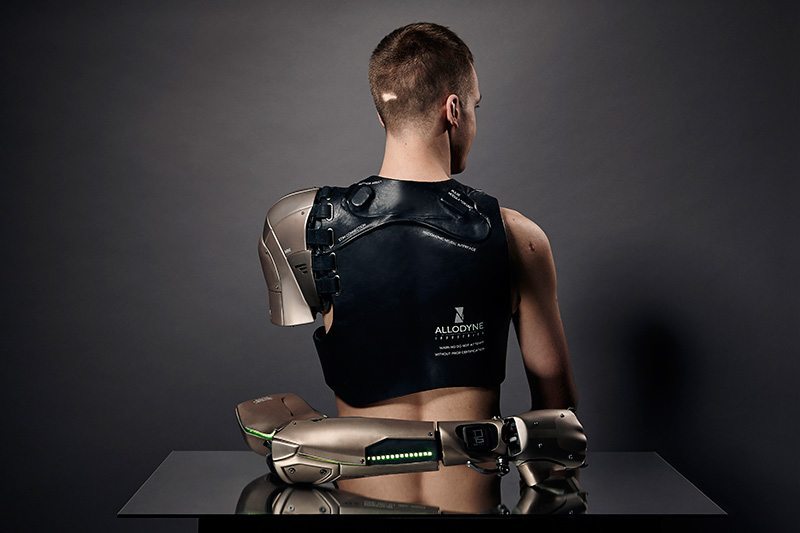
Sophie is the founder of The Alternative Limb Project, which creates highly stylised art pieces using prosthetics as a medium. Her clients have included models, Paralympics athletes, music performers, and as with the MGS limb, video game companies.
I was greeted at her London studio with a hug and a warm smile, which offset the tools and disembodied limbs hanging from the walls so much that I didn’t even notice that the room looked like a scene from a horror film. With all kinds of bits and pieces surrounding us, I was offered a drink and introduced to Rudi Kolenc, a 3D modelling artist who was busy designing a new lower limb prosthetic.
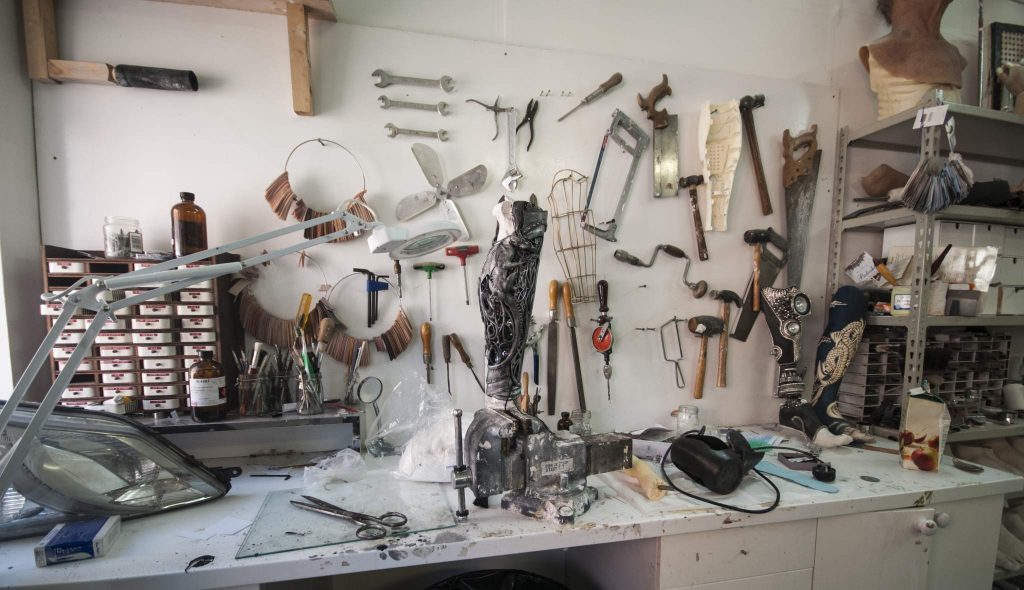
Sophie de Oliveira Barata: an extraordinary human
We began by talking about Sophie’s background, including her education in special effects make-up and prosthetics for film at the University of the Arts London.
“I did a foundation in art, and I almost went down the fine art route, and then I thought it’d be good to do something where I could learn certain skills that I could apply to jobs straight away. Working with people and merging that kind of reality with fantasy, manipulating and tricking the eye I guess. So I was quite interested in that, then I went down the special effects route.”
“I have one of those annoying brains, when everyone else was really excited in third year, got really competitive and wanted to [do special effects], and I was thinking ‘well actually, if that’s what everyone else is doing, maybe I could do something different’. I heard about this job doing realistic limbs and I thought ‘oh that sounds really interesting, I’ll just go down this route!’ So I got totally interested in that because that was like the ultimate challenge, would be to make something that could be blended with a body part. Try and keep that trick all times, under different lighting, when you haven’t got the tricks of a camera as well. And then also, obviously, from a rewarding perspective, it would be great to work on something for someone that meant so much to them. And then also from an artistic perspective, just being given a job and being able to do the whole thing from start to finish, whereas in the film industry you do little bits and it gets moved onto the next person, so you’re not responsible for the whole piece…I then heard about [the realistic limb job] through a friend who worked at this place, and I was there for 8 years. In my spare time I was just making unusual costumes out of the same materials.”
Sophie showed me photos of the costumes she made, and they were pretty amazing. One was a collar made of brightly colored pencils, another had prosthetic fingers and lace as a mid-body adornment. Her creativity shines through in everything she makes, and her passion in her projects led to some sleepless nights.
“I’d be at the studio at 7.30am, and then we’d finish at 4, and they’d know I’d continue working but not to what time I’d stay. I would stay until like 3 in the morning, I’d sleep downstairs, pretend to leave and then they’d come in the morning and I’d be cycling around the block and I’d turn up and just be like ‘oh hi!’ after having worked all night. I just had a passion to have a creative outlet, because even though sculpting the realistic prosthetics was really good fun to do, I couldn’t exercise my imagination. I could do that with the costumes.”
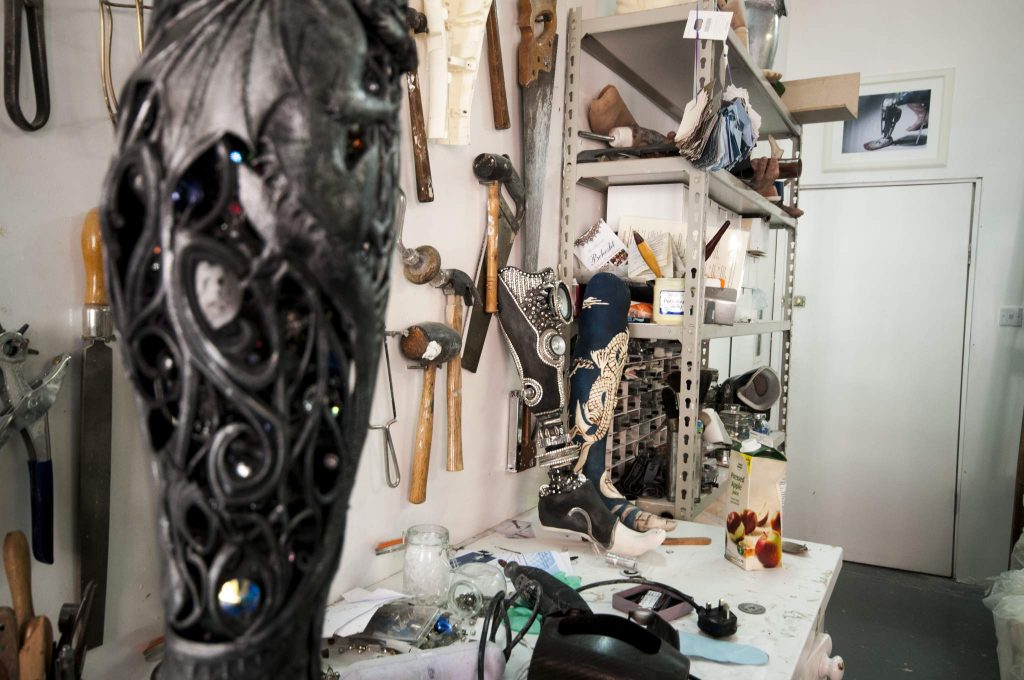
The road to combining creativity with prosthetics
Wanting to change direction and the desire to creative other worldly pieces that could be worn as prosthetics then led Sophie to where she is now, working with amputees to design and make amazing prosthetics.
“It coincided with a little girl, who would come and have a new realistic leg made every year. She wanted something a bit different, just pictures, but I could see from a rehab perspective that she was really excited by the process of being able to choose what she could have on her leg. [It was] something that her friends couldn’t have, rather than being a poorer version of what they had.”
“Every year I’d see [Polyanna] and she’d be like ‘wow’, and she made a me drawing which was really sweet.”
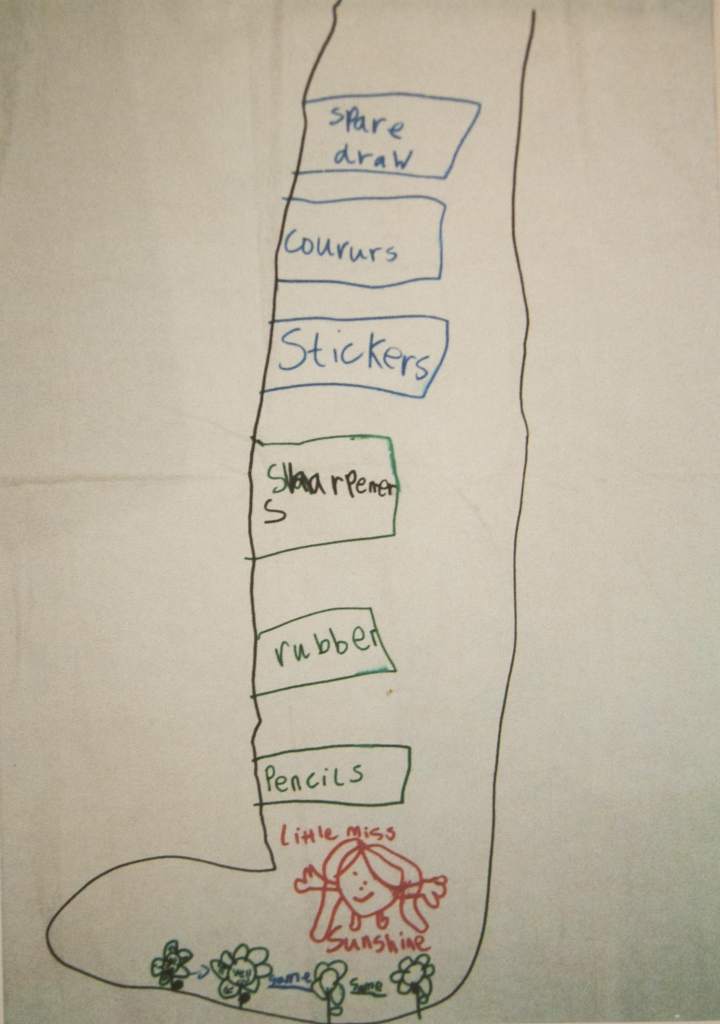
“[From there] I thought there must be people out there like her, and it’s hard to imagine being an amputee, but if I was an amputee, I think I’d probably want something a bit different. So I researched to see who was out there that…might have a similar kind of idea, and I found Viktoria Modesta. She was modelling on the front cover of Bazaar magazine, and I got in touch with her. She said she’d be up for doing some interesting projects, and it kind of spiralled from there!”
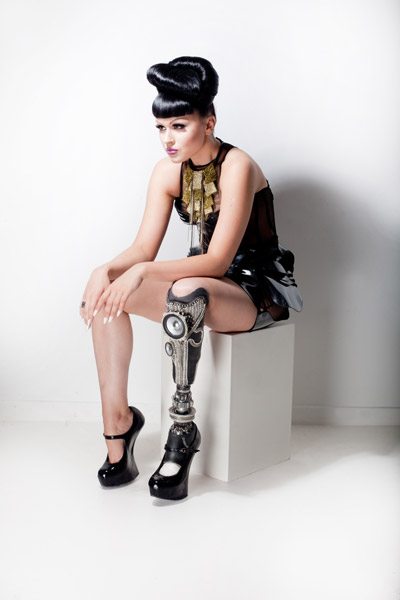
Image: John Enoch
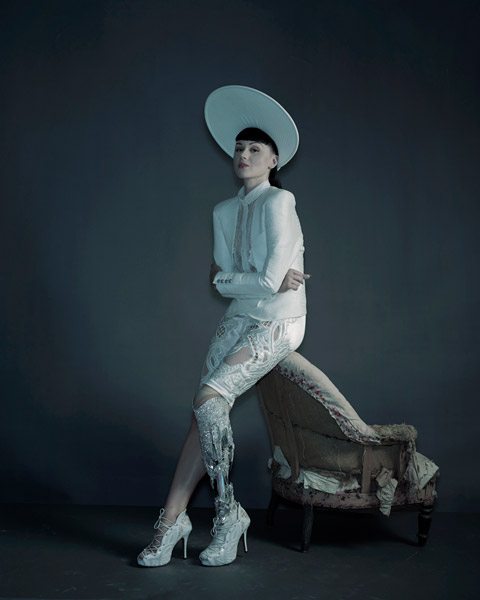
Image: Nadav Kander
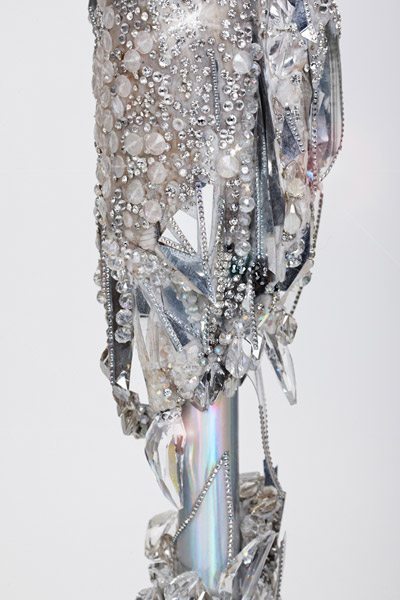
Image: Omkaar Kotedia
“I did some pieces with her, she was in the Paralympics closing ceremony wearing this crystallized leg. She got a lot of positive attention for it. She’d had an elective amputation, and [before I met her] she’d modelled around 300 shoots. Only a handful of those shoots looked like she had two natural legs. Not many people knew she was an amputee as it was shaped well and she disguises the join well and wore tights, etc. I think she only liked three of them where she had shown she was an amputee. So she got positive attention for being creative with a limb.”
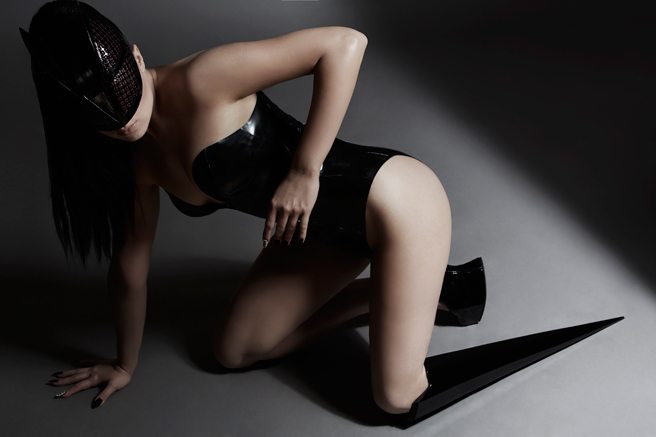
Image: Ewelina Stechnij.
Sophie’s alt-limbs are in demand
“So I make the realistic limbs, and then alternative as well. The realistic stuff is kind of my bread and butter. The alternative pieces get a lot of enquiries from all over the world, I think the furthest one was Papua New Guinea. But I can’t necessarily work with everyone, I need to see them and work with them, and see them several times. Sometimes if it is a lower limb I need to see the prosthetist as well, to check that it’s ok to work on that limb. They’ve also got to be able to afford it, and extravagant enough to wear it. They also need to be at a certain point in their rehabilitation when I can really start working with them. For example, with swelling, there’s no point making something that won’t fit when it shrinks again.”
Sophie often fields calls from people in hospital who have just had an amputation, and having seen her work before want a prosthetic made right away. Unfortunately she needs to tell them to wait a couple of years.
“But it gives people a bit of hope, especially with role models like Viktoria Modesta. From an aesthetic perspective, it’s not all doom and gloom, it could be something beautiful. There is possibility, it’s not just a dead end.”
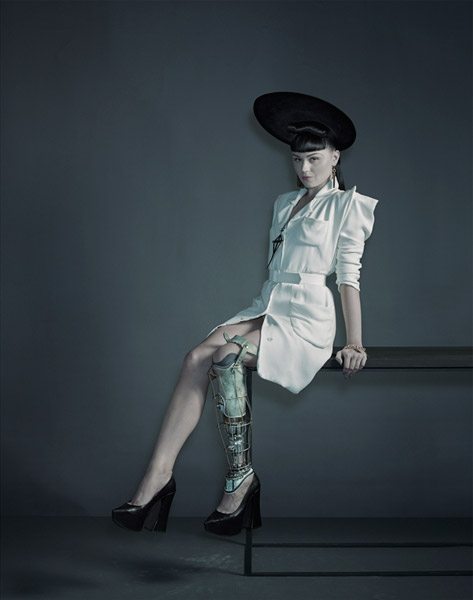
Sophie has also inspired people to want to create what she does, with engineers and artists calling her, and even a 12 year old who wants to pursue a career in prosthetics when he grows up.
Shifting the tone
People like Sophie are helping change the conversation around amputees and prosthetics. Where in the past, where some people would feel pity, now are asking where these amazing limbs come from, which is a refreshing change.
“This one here that I’m making, I’m doing a few finishing touches. Rudi 3D [modelled] all of the outside pieces, and that was based entirely on [the client’s] ideas. She was completely with us through the whole process. She put it on the other day and said she just got shivers, she looked down and said ‘this is amazing’. To look down, and to see the shape of your leg but for it to be in a different form is amazing.”
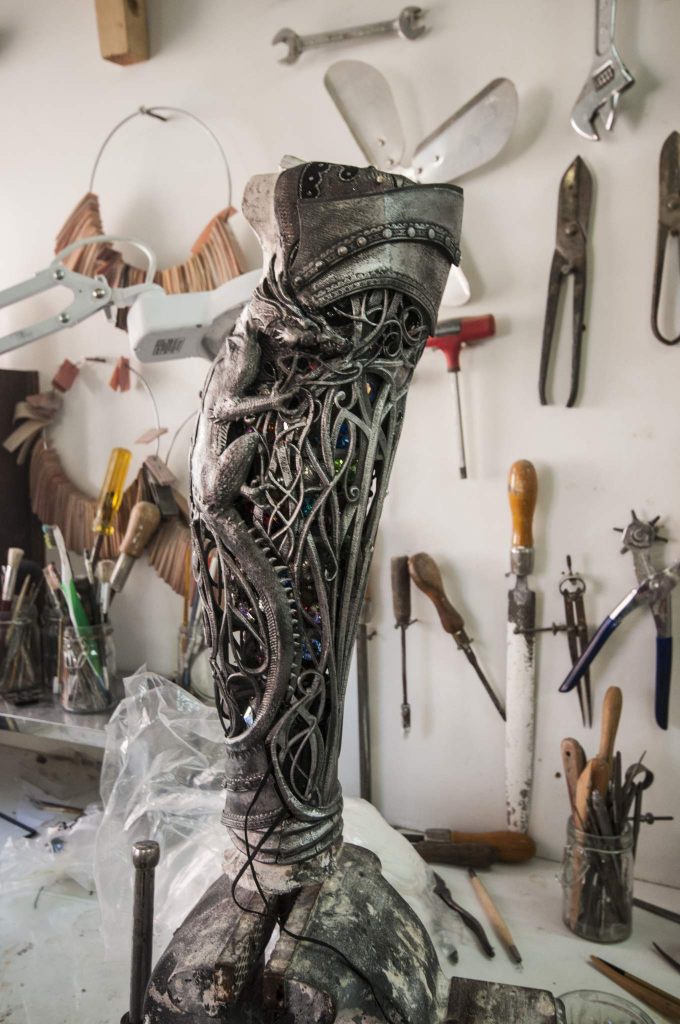

Rudi reconstructed the whole leg from scratch after their photographer took extensive shots of the existing leg so the prosthetic would be shaped the same way.
“It comes in two pieces, and was 3D printed with nylon. It bolts together, and there’s a section at the back that magnets in and out [that allows for charging the leg]. This inside…, is a silicon cover that goes over the Genium leg, which she charges at night, and it helps her power up stairs”
“The client is coming back tomorrow because we need to tweak a few things, but when she first tried it on she said ‘right, I want another one’. It can be a bit addictive.”
Looking around the studio, it is easy to see why. With the stereo leg sitting on a work bench alongside other bits and pieces, one stylized prosthetic wouldn’t be enough.
“It would be nice to have someone with a beautiful suitcase and they had all these different tools that they could attach” Sophie added.
3D printed limbs
The Skyrim inspired lower limb isn’t the first time De Oliveira Barata has used 3D printing for her work.
The Anatomical Leg was the first that used 3D printing, and was made for Ryan Seary, an ex-serviceman for explosive ordnance disposal.
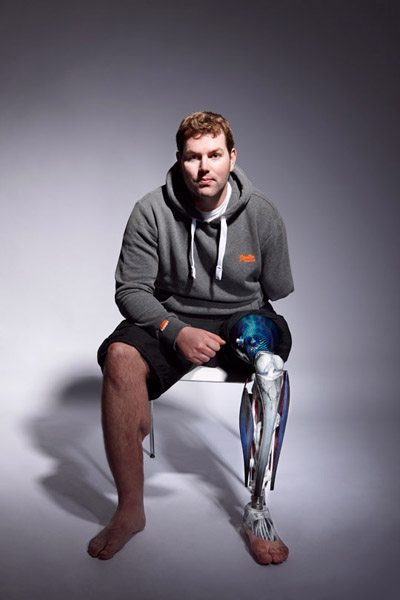

“My brother helped me with the muscle plates, he’s an architect. That was the first one I had 3D printed.”
The limb was made with 3D printed nylon, silicone, and lacquer in various colors.
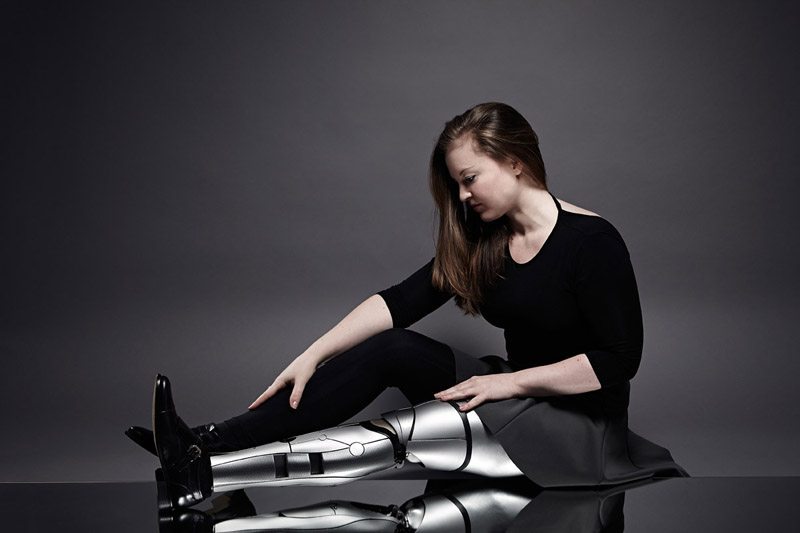
“The Bloomsbury Droid was 3D printed, that was a really lovely piece. I worked on that one with a product designer who was working with Rhino. The beauty of 3D designing is that before you’re committed, you can look at various stages, and so she (Veronika Pete) was very much part of that whole process. [The prosthetic] is quite minimal really, but it’s amazing how much went into it.”
Why 3D printing?
“I learnt about 3D printing through my brother at the time the Anatomical leg was made, just the idea that you could have this piece that would have otherwise been difficult to sculpt [was interesting]. Also the idea that the person could view it on a screen before it’s made, and that it’s for prototyping, and in a sense all [the prosthetics I make] are prototypes. Every piece is unique and hasn’t been made before, so it’s almost like the perfect material for it.”
Sophie is currently working on her third collaboration with Rudi Kolenc, who designs everything before it is printed. With their history of working together, they can anticipate any weak points in their designs and change them accordingly.
“The benefit of using software to design these pieces is that it allows for feedback straight away,” Rudi remarked. “Before we couldn’t do it. There couldn’t be a massive change of mind”
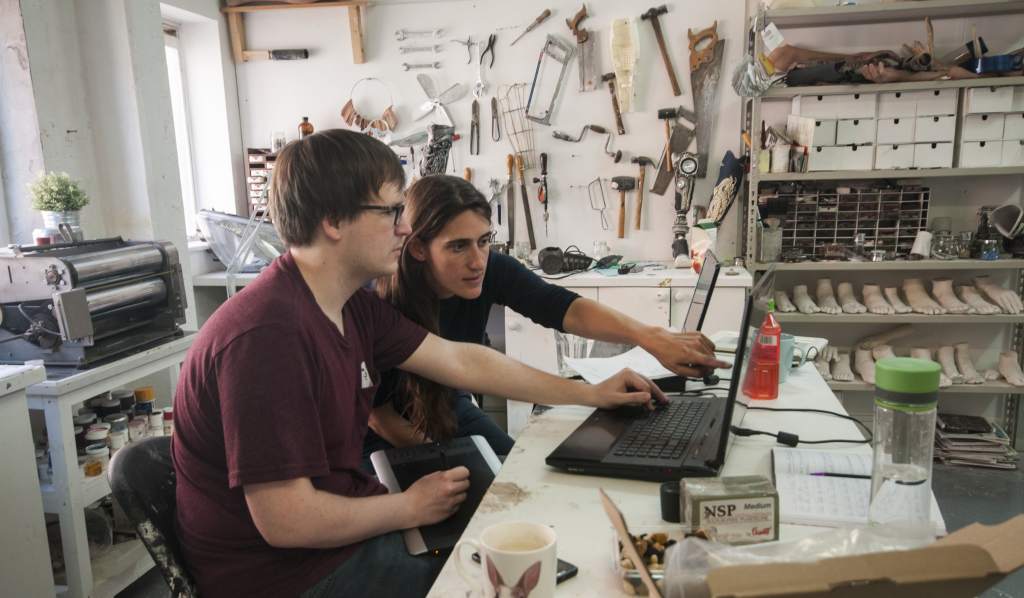
What has been Sophie’s favorite project to date?
“Favorite in terms of challenging but feeling like I had a grip the whole way through…I really enjoyed doing Ryan’s leg, because it was a combination of the realistic element and the unusual, and I hadn’t done anything with 3D printing before, so that was really good fun. It meant a lot to him as well, he really embraced the design. I was able to kind of interpret what he wanted, I had that kind of flexibility and freedom I guess, and it just went down really well.”
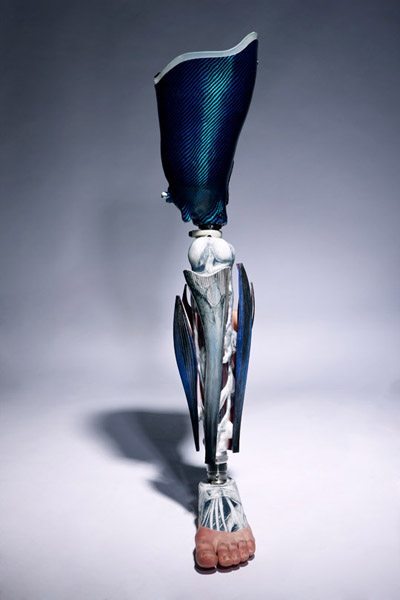
“But all of them, for different reasons. It’s always fun working with Viktoria, she has ideas of what she wants, but at the same time she also gives [creative] freedom.”
What are you working on now?
“We’re currently working on a geometric design, it’s a bit more fluid, and we’re just kind of playing with ideas at the moment.” said Sophie. “Sections that can be swapped in and out, with ones that are more detailed or a different color.”
“You can be quite playful without wasting materials, it’s just time really”
As my time in Sophie de Oliveira Barata’s studio drew to a close, I found myself not wanting to leave. To be in the presence of this amazingly creative individual who has used her talents to help amputees was just fantastic.
You can keep up to date with Sophie’s projects on her website, Twitter and Facebook. If you are interested in contacting Sophie about a prosthetic or a collaboration, you can do so here.
Featured image: Feather Armour, Co-created by Sophie de Oliveira Barata and Rowena Vickerman, Photographed by Charlotte Epstein
Stephanie Reid, Created for Stephanie Reid by Sophie de Oliveira Barata, Proactive Prosthetics, Helen Landsdown and Kaos Art. Photography by Omkaar Kotedia.
Anatomical Leg, Created by Sophie and Eduardo de Oliveira Barata. Photography by Omkaar Kotedia.



